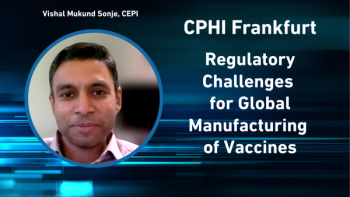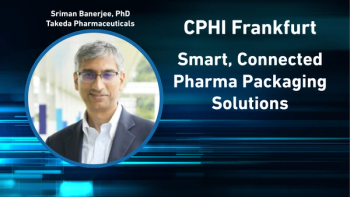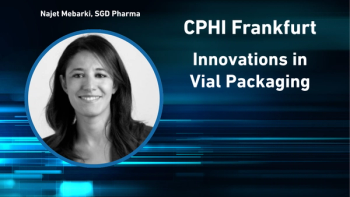
- Pharmaceutical Technology-02-02-2019
- Volume 43
- Issue 2
As Technology Advances, Annex 1 Falls Short
Robotic isolators and single-use technologies are gaining ground, according to aseptic processing consultant Jim Agalloco.
Aseptic manufacturing, and particularly fill and finish operations, continue to challenge pharmaceutical manufacturers. Consultant and Editorial Board advisor Jim Agalloco discussed industry and technology trends and regulatory challenges with Pharmaceutical Technology.
Adoption of advanced technology
PharmTech: Have you seen any change in how the industry is using advanced aseptic manufacturing technology?
Agalloco: One trend that is moving very quickly is the use of robotics in isolators, eliminating the need for gloves, so that less human intervention is needed than there ever was. VanRx has taken this to an extreme with its gloveless isolators; other equipment manufacturers are moving in the same direction, including AST, IMA, Fedegari, and Aseptic Technologies. Currently, this robotic equipment runs at lower speeds than traditional equipment, but robots don’t take breaks or lunch so there is a lot of potential benefit. The essential first step was moving to closed systems, after that, vendors and end users can work on making them run faster.
We are also seeing explosive growth, even faster than the growth of robotics, in the use of single-use disposables within aseptic manufacturing. The idea is to take away the stainless-steel piping and rigid lines, so that there is one connection from product supply all the way to the fill needle.
Using disposables requires collaboration between single-use system vendors and equipment manufacturers, who must integrate single-use components into their filling controls and get them to work properly. This approach eliminates the need to clean and keep so many parts in inventory and reduces cost and contamination risk. Single-use systems are going into high-speed filling lines and into robotic closed systems.
PharmTech: Has there been any change in the scope of services that aseptic equipment vendors are offering pharma customers?
Agalloco: We are seeing an alignment of supply chains so that vendors are doing much more of the upstream work that manufacturers used to have to do. For example, many equipment vendors are now providing pharmaceutical manufacturers with prewashed, presterilized, and predried glass, syringes, closures, and stoppers.
This approach reduces the end user’s facility and personnel needs and puts more responsibility on suppliers. Vendors are taking the lead in this change.
Impact of mergers
PharmTech:Are the mergers and acquisitions that have occurred in the contract manufacturing space over the past few years having any impact on aseptic operations within the industry?
Agalloco: Contract manufacturing organizations (CMOs) are getting larger. More pharmaceutical manufacturers want to work with one partner from small-scale to commercial manufacturing to reduce the number of hand offs. This trend also ensures that CMOs have sufficient resources. Poor performers are being weeded out.
PharmTech: Is compliance improving?
Agalloco: CMOs are getting better and more players are getting into this space. However, major pharma companies continue to struggle and much of this is directly attributable to aging facilities. Anywhere you see an older plant you are likely to see problems. Generic injectables and vaccines sell with next to no profit, but modernizing manufacturing or replacing a facility could cost $200 million or more.
PharmTech: Is the emphasis on generic drugs creating this problem?
Agalloco: Drug shortages are merely the result of issues with cost control that came out of the approval of generic drugs. These issues have developed over 30 years as facilities have aged, and prices have fallen. Very simple drugs are in short supply because nobody invests in them when the margins are so thin. I am terrified about biosimilars, because now we are taking even more complex processes and making them cost competitive.
PharmTech: Are you seeing greater acceptance of innovation in pharma?
Agalloco: As far as adopting innovative technologies, pharma is still a laggard industry, especially on the sterile side. Even though the FDA’s Emerging Technology Team (ETT) has included advanced aseptic technology in its agenda, some equipment innovators struggle with a Catch-22: Regulators won’t review a new technology unless it is used in a drug submission, and no drug manufacturer will invest in the technology if no other drug manufacturer has previously used it and had a drug approved with it.
PharmTech: Do we need new guidances on aseptic manufacturing?
Agalloco: No. Guidances can become a barrier to improvement. FDA regulations work because they tell you ‘what to’ and not ‘how to’. The more regulators put ‘how tos’ into their expectations, the less innovative we become.
PharmTech: What are your thoughts on Annex 1 (1), the European Union (EU) draft guidance?
Agalloco: Annex 1 represents one of the EU’s first efforts to develop guidance in an open way with the industry, but they won’t get it right in one pass. Industry submitted thousands of critical comments, and my colleagues, James Akers and Russell Madsen, and I submitted over 170 comments (2).
Problems with Annex I
PharmTech: What are the most glaring problems in the draft guidance?
Agalloco: Apart from the way it is written and organized, my colleagues and I take issue with the fact that the draft presents a view that conflicts with existing and established global regulations, standards, and compendia (e.g., US and Japanese guidance on sterile manufacturing). For example, the document does not incorporate the requirements established by International Organization for Standardization (ISO) 14644, and perpetuates a myth that microbiological testing can improve sterility assurance (3). The document also uses an antiquated and arbitrary classification system, rather than ISO 5, 6, 7, and 8 categories.
In addition, the draft does not incorporate the most modern and appropriate guidance for sterile product preparation, as outlined in United States Pharmacopeia (USP)Chapters 1211, 1228, and 1229 (4–6). Classification of controlled environments should be limited to non-viable particle monitoring as described in ISO 14644, and not based on microbial enumeration.
Furthermore, the guidance presents an unscientific view of microbial monitoring. The limit of detection for microbial testing is much higher than one colony forming unit, as the document now states. As a result, it may overstate the value of environmental monitoring in manufacturing sterile medicinal products. Its language also conflicts with the European Medicines Agency’s (EMA’s) guidance, specifically its water for injection (WFI) Q&A paper (7), and Guidelines on Good Manufacturing Practice Specific to Advanced Therapy Medicinal Products (8).
PharmTech: How does it cover cleanrooms and advanced technologies?
Agalloco: The document groups conventional cleanrooms, restricted access barrier systems (RABS), and isolators together, even though these technologies are demonstrably different in many ways. This approach diminishes the performance of isolators, inflates RABS capabilities, and fails to consider adequately the limitations of barrier-equipped manned cleanrooms.
PharmTech:How does the document approach the topic of validation?
Agalloco: The draft guidance asks for testing of materials, containers, and surfaces, as if expecting testing alone to assure product quality. The core principle behind validation is to assure confidence in a process’ reliability and appropriateness in ways that testing alone cannot do. Misplaced emphasis takes us back in time.
References
1. R. Madsen, J. Agalloco, and J. Akers, “Annex 1–Misses the Mark,” Pharmaceutical Technology Europe30 (2) (201).
2. European Commission, EudraLex, Volume 4, EU Guidelines to Good Manufacturing Practice Medicinal Products for Human and Veterinary Use,Annex 1, Manufacture of Sterile Medicinal Products, December 2017.
3. International Standards Organization, ISO 14644–Cleanrooms and Associated Controlled Environments-Part 1: Classification of Air Cleanliness by Particle Concentration, 2015.
4. USP, General Chapter <1211>, Sterilization and Sterility Assurance of Compendial Articles, USP-NF (US Pharmacopeial Convention, Rockville, MD, 2017).
5. USP, General Chapter <1228>, Depyrogenation, USP-NF (US Pharmacopeial Convention, Rockville, MD, 2017).
6. USP, General Chapter <1229>, Sterilization of Compendial Articles, USP-NF (US Pharmacopeial Convention, Rockville, MD, 2017).
7. European Medicines Agency, EMA/INS/GMP/443117/2017, Questions and Answers on Production of Water for Injections by Non-Distillation Methods–Reverse Osmosis and Biofilms and Control Strategies, August 2017.
8. European Commission, EudraLex, Volume 4, EU Guidelines on Good Manufacturing Practice Specific to Advanced Therapy Medicinal Products, November 2017.
Article Details
Pharmaceutical Technology
Vol. 43, No. 2
February 2019
Pages: 40, 42
Citation
When referring to this article, please cite it as A. Shanley, "As Technology Advances, Annex 1 Falls Short," Pharmaceutical Technology 43 (2) 2019.
Articles in this issue
almost 7 years ago
Spectroscopy Facilitates Lean Analysisalmost 7 years ago
Fundamentals of GMP Warehouse Designalmost 7 years ago
Effective Root Cause Determinationalmost 7 years ago
Process Development Best Practices for Topical Drug Productsalmost 7 years ago
FDA Promotes Quality Standards to Reduce Shortagesalmost 7 years ago
Small-Batch Aseptic Fill/Finish Systemalmost 7 years ago
Automatic Desiccant Inserteralmost 7 years ago
Multi-Shaft Mixer and Disperseralmost 7 years ago
Sterile Boot Coversalmost 7 years ago
Innovations Maintain the Cold ChainNewsletter
Get the essential updates shaping the future of pharma manufacturing and compliance—subscribe today to Pharmaceutical Technology and never miss a breakthrough.





